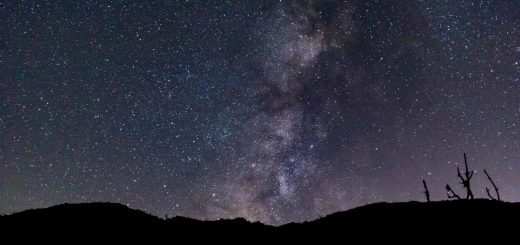Are Crop Circles Messages from Aliens?

Before diving in, please note: This post is for informational purposes only. If you’d like to know more about how we approach topics, feel free to check out our friendly Disclaimer Page.
Hey there, amazing readers! 🖐️ Just a quick note: yes, we know there are a lot of ads here. Trust us, we get it—it’s not the prettiest look, but they help us keep this blog alive and kicking. Those pesky little ads cover the costs of all the behind-the-scenes magic, from hosting and tech stuff to creating content we hope you’ll love.
We’re committed to delivering quality posts, and your support (even just sticking around despite the ads) means everything to us. So, bear with us, and thanks for helping us keep the good vibes rolling. Now, on to the fun stuff! 😉
TRANSLATE BUTTON AT THE END OF THE ARTICLE
A Quick Overview
Crop circles have long captured our imagination, swirling with intrigue and speculation.
These astonishing patterns in fields of crops have been attributed to everything from natural phenomena to extraterrestrial messages.
Are these formations a clever prank, a message from distant worlds, or simply a phenomenon of nature?
This article aims to explore the multifaceted world of crop circles, diving into their origins, the science behind them, and the fascinating debate that surrounds their existence.
So, whether you’re a skeptic or a believer, buckle up as we embark on this curious journey!
What Are Crop Circles and Their Fascinating Origins?
Crop circles are these mesmerizing formations that appear overnight in fields, typically created by flattening crops like wheat or barley.
They can range from simple circles to more intricate designs featuring complex geometric shapes.
The phenomenon first gained visibility in the late 20th century, particularly in the UK, but it seems to have historical roots reaching back centuries.
The origins of crop circles are debated.
Some believe they arose as a modern art form or as practical jokes, while others argue they have deep historical significance.
The first recorded instance in the UK dates back to 1647 when a farmer claimed to see a "mowing devil," a creature that supposedly flattened crops in a circle.
Such tales only add to the mystique!
In recent years, crop circles have become a canvas for artistic expression.
Artists from all over the globe have embraced the phenomenon, creating elaborate patterns, sometimes even incorporating social or political messages.
This transformation from mysterious formations into artistic endeavors reflects a changing perception and growing appreciation of these striking fields.
The Mystery Behind Crop Circle Patterns Explained
When you look at a crop circle, it’s hard not to wonder how it was made.
Many patterns feature intricate designs that hint at intelligence behind their creation.
Some patterns are simple circles; others resemble complex fractals or symbols.
Each design appears almost too perfect, leading many to speculate about their origin.
Scientists have suggested several natural causes.
Some believe weather phenomena, like wind or ball lightning, might play a role.
Others suggest that certain plant growth patterns could lead to these shapes.
However, these explanations often fall short when faced with the complexity and detail of many crop circles.
The best way to understand these patterns is to study them closely.
Researchers have studied the geometry of crop circles, noting their alignments with celestial events or geographical features.
This level of precision suggests that they aren’t mere coincidences.
Yet, the debate continues: are these shapes the creative flair of human artists, or do they point to something more profound?
Historical Sightings: Crop Circles Through the Ages
Crop circles aren’t a new phenomenon.
Historical records indicate sightings across various cultures, though they weren’t always referred to as crop circles.
In the 16th century, reports arose of circles appearing in fields in Europe, often linked to folklore and myth.
Different cultures have attributed crop circles to divine or supernatural forces.
In ancient Egypt, some researchers have even drawn parallels between crop circle patterns and hieroglyphics, suggesting a historical significance that stretches back millennia.
This interconnectedness of history and folklore paints a rich tapestry, inviting us to explore further.
Fast forward to the 20th century, and the phenomenon exploded in popularity.
The 1970s and 1980s saw a surge in sightings, particularly in England.
Media coverage played a significant role, bringing crop circles into the mainstream consciousness.
Today, they are often linked to UFO sightings and extraterrestrial encounters, further embedding them in popular culture.
Scientific Explanations: Nature or Human-Made?
Skeptics assert that many crop circles are the result of human creativity and mischief.
In fact, various artists and pranksters have come forward, confessing to creating elaborate designs overnight.
They use ropes, boards, and simple tools to achieve these stunning visuals.
It’s a fascinating glimpse into human ingenuity!
On the flip side, some researchers argue that not all crop circles can be easily explained.
They note that certain formations display physical changes in the plants, such as altered growth patterns and soil composition.
These anomalies lead some to believe that these circles are not simply the result of human action.
So, what’s the truth?
It might be a blend of both.
Some are undoubtedly man-made, while others might have natural or even unexplained origins.
This duality adds to the mystery and keeps us questioning what we see.
Aliens or Artistry? The Debate Over Crop Circles
The idea that crop circles might be messages from aliens is a tantalizing one, gripping the imaginations of countless enthusiasts.
Some believe these patterns are not just random; they could be signs or communications from extraterrestrial beings trying to reach us.
Proponents of this theory often point to the intricate designs and their alignment with astronomical events.
The complexity suggests an intelligence behind them—something or someone trying to convey a message.
They argue that if advanced civilizations exist, these crop formations might be their way of reaching out.
However, many skeptics dismiss this idea outright.
They argue that the patterns can be explained by human creativity and ingenuity.
Additionally, the absence of direct evidence for alien activity makes this theory hard to accept for many.
So, it becomes a classic case of belief versus skepticism.
Whether you see crop circles as art or extraterrestrial messages might depend on your perspective.
Famous Crop Circles That Captured the World’s Attention
Throughout history, some crop circles have gained fame, mesmerizing onlookers and drawing media attention.
One of the most well-known circles appeared in Wiltshire, England, in 1996.
This intricate formation featured multiple circles and geometric shapes, captivating both believers and skeptics alike.
Another remarkable instance occurred in 2002 when a massive circle appeared in a field in Hampshire.
This formation featured a complex pattern resembling a double helix, sparking debates about its meaning.
The media frenzy surrounding this event showcased how crop circles continue to capture public fascination.
In 2017, a circle resembling the famous “Nazca Lines” appeared in a field in the UK.
Its resemblance to ancient rock art further fueled speculation about the connections between crop circles and human history.
Each of these famous examples adds layers of intrigue to the crop circle phenomenon.
Analyzing the Geometry: Are They Messages to Us?
Geometry plays a significant role in the crop circle debate.
Many believe that the shapes hold key meanings, with some patterns mirroring mathematical concepts like the Fibonacci sequence or sacred geometry.
This alignment with fundamental principles raises questions about their purpose.
Some enthusiasts argue that crop circles serve as a form of communication from advanced beings or even nature itself.
They see the patterns as a way to bridge the gap between humanity and the universe.
This idea resonates with many who seek meaning in a chaotic world.
However, others caution against overinterpreting the designs.
They argue that while the patterns are indeed beautiful and intriguing, attributing deeper meaning without evidence can lead to misleading conclusions.
The quest for understanding should be grounded in evidence and critical thinking.
The Role of Technology in Studying Crop Circles
Modern technologies have revolutionized how we study crop circles.
Satellite imagery and drones provide detailed views of formations, allowing researchers to analyze patterns from above.
High-resolution photos reveal details that might be missed from the ground, enhancing our understanding of these enigmatic shapes.
Moreover, advancements in soil analysis help scientists investigate the physical changes in plants surrounding crop circles.
This technological integration is crucial, offering a multi-faceted approach to the study.
Researchers can now connect patterns with plants and soil in ways that were previously unimaginable.
The utilization of technology raises exciting possibilities for the future of crop circle research.
As our tools improve, so too does our ability to uncover the truths hidden within these mysterious formations.
Crop Circles and Their Impact on Popular Culture
Crop circles have influenced popular culture in many ways.
From documentaries to movies, they serve as a canvas for creative expression and exploration of humanity’s relationship with the unknown.
Films like "Signs" and documentaries such as "Crop Circles: Quest for Truth" delve into the mystery, sparking curiosity and debate.
Moreover, crop circles have inspired artists and musicians alike.
Artists create works inspired by the patterns, and musicians weave the themes of mystery and exploration into their songs.
The phenomenon serves as a cultural touchstone, reminding us of our collective fascination with the unexplained.
Social media has further amplified the conversation.
Numerous online communities discuss crop circles, sharing images, theories, and personal experiences.
This digital age keeps the dialogue alive, allowing enthusiasts to connect and share their passion for the phenomenon.
The Psychology of Belief: Why Do We Want to Believe?
The allure of crop circles often stems from our intrinsic desire to find meaning in the inexplicable.
Humans have a natural curiosity to explore and understand the unknown, leading to the appeal of theories surrounding alien messages.
This psychological aspect plays a pivotal role in shaping beliefs.
Many people find a sense of wonder in the thought of extraterrestrial life.
The idea that beings from another world might be reaching out to us can be comforting and thrilling.
It speaks to our need for connection and exploration beyond the boundaries of our everyday lives.
Skeptics, however, remind us that belief can often cloud judgment.
The importance of critical thinking becomes evident, as not all phenomena warrant belief without evidence.
Striking a balance between wonder and skepticism helps maintain a grounded perspective while allowing us to explore our curiosities.
Expert Opinions: Scientists Weigh in on the Phenomenon
When it comes to interpreting crop circles, experts from various fields have shared their insights.
Some scientists argue that while some circles are indeed man-made, others exhibit characteristics that challenge easy explanations.
For instance, physicists have studied the soil samples from crop circles, noting unusual electromagnetic activity in some formations.
These anomalies fuel debates on whether these circles could be more than simple pranks.
Experts urge caution but acknowledge the need for continued research.
While many scientists remain skeptical about extraterrestrial connections, they agree that crop circles pose interesting questions about human creativity and the nature of belief.
Ultimately, the scientific community encourages further investigation and open-mindedness, fostering a spirit of inquiry.
Conclusion: What Do Crop Circles Mean for Us Today?
Crop circles embody a blend of mystery, creativity, and speculation, making them a unique subject of study.
Whether viewed as artistic expressions, natural occurrences, or potential messages from the cosmos, they provoke thought and spark curiosity.
As we unravel the threads connecting history, belief, and science, we recognize that crop circles hold a mirror to our own desires for understanding.
They challenge us to confront our beliefs, question our perceptions, and ultimately explore the vastness beyond our own experiences.
So, whether you’re a skeptic, a believer, or simply a curious observer, crop circles invite us to engage with the unknown.
They remind us that some mysteries may never be fully solved, and that’s part of the beauty of this enchanting phenomenon.

The Enlightenment Journey is a remarkable collection of writings authored by a distinguished group of experts in the fields of spirituality, new age, and esoteric knowledge.
This anthology features a diverse assembly of well-experienced authors who bring their profound insights and credible perspectives to the forefront.
Each contributor possesses a wealth of knowledge and wisdom, making them authorities in their respective domains.
Together, they offer readers a transformative journey into the realms of spiritual growth, self-discovery, and esoteric enlightenment.
The Enlightenment Journey is a testament to the collective expertise of these luminaries, providing readers with a rich tapestry of ideas and information to illuminate their spiritual path.
Our Diverse Expertise 🌟
While our primary focus is on spirituality and esotericism, we are equally passionate about exploring a wide range of other topics and niches 🌍📚. Our experienced team is dedicated to delivering high-quality, informative content across various subjects ✨.
To ensure we provide the most accurate and valuable insights, we collaborate with trusted experts in their respective domains 🧑🏫👩🏫. This allows us to offer well-rounded perspectives and knowledge to our readers.
Our blog originally focused on spirituality and metaphysics, but we’ve since expanded to cover a wide range of niches. Don’t worry—we continue to publish a lot of articles on spirituality! Frequently visit our blog to explore our diverse content and stay tuned for more insightful reads.





